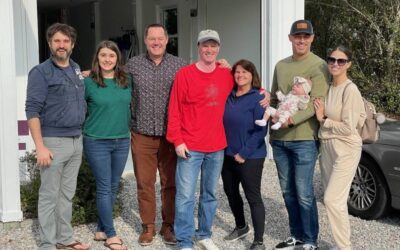You’re excited about fractionalizing your client’s second home to free up cash and equity while maintaining a share for their own personal use or rental income.
Here are six considerations to optimize the attractiveness of your co-ownership listing:
1. Trigger Buying Curiosity by Leveraging Co-Ownership’s Powerful Pricing Advantage
First things first. Potential co-owners will be searching in desirable and expensive vacation locations, usually via the “map” feature, and finding most of the listings at price points that are hard to digest. And then they’ll see yours at a fraction of the cost, and it’ll trigger a higher clickthrough rate because they will be curious how your property could possibly be that low.
You want this. You want a pricing advantage because your listing will bring more traffic than others.
2. Highlight the Power of Co-ownership in Your Headline
The main benefit of co-ownership is equity ownership in a property that they couldn’t otherwise afford, efficiently tied to the amount of time they may actually be able to use it. So, lead with that.
The recipe is:
[luxurious benefit]
+ [location]
+ [number of weeks]
+ [fraction of the cost]
Use some or all of these to get creative with your title.
Examples:
6 Blissful Weeks of Waterfront Sunrises, at a Cost that Makes Sense.
6 Weeks of Lakefront Luxury, Co-owned, Your Way and on Your Budget
Unplug and Unwind with Your Very Own 13 Weeks of Ownership in Blowing Rock, NC
100% of Waterfront Lake Travis Luxury at ⅛ the Cost.
3. Create a Powerful Opening Statement That Sells the House, and Connects to Co-Ownership
Your opening statement should answer the prospective buyer’s dual questions of “what am I looking at and how is it priced so low?” The goal is to keep them reading and get them imagining owning a share of your vacation home.
So, you’ll need to mix together your traditional techniques of highlighting the house, but you’ll also highlight the credibility of Plum as your means of making co-ownership easy, effective and safe.
As an example:
“This spacious beachfront property in Holden Beach, NC has 7 BRs, an updated kitchen, and 270 degree views from the top floor living and dining room spaces. The owners have partnered with Plum CoOwnership, a nationally recognized leader in co-ownership for private groups, and are offering ⅛ shares that provide each co-owner with 6 weeks of usage a year and ownership equity in the property.”
4. Add Co-ownership Details to the End of the Description
Writing a great MLS description is one of the most important talents of a real estate agent. You don’t really need these, but here are some tips and tricks from Zillow that can help. Create your MLS description to highlight the features of your property, but at the end, you’ll add the following information:
“This home is being offered by the seller for co-ownership. The owner will keep x shares, and sell y shares. Together, the group will form an LLC to purchase the house, under the guidance of Plum CoOwnership, Inc, a leader in co-ownership solutions. Every Plum CoOwnership member is PlumCertified (background check, 740+ credit scores, and validation of liquid assets). The members enjoy a guided experience to set up the co-owner code of conduct, which is documented in the Plum Operating Agreement. Plum also facilitates the creation of a fair use calendar, a reserve fund, an LLC with an operating agreement designed for healthy and successful co-ownership, and a joint bank account to protect and enhance the enjoyment of all members. Learn more about Plum CoOwnership at www.plumcoownership.com [“on their website” if the MLS doesn’t allow outside links] or by inquiring with the listing agent.”
5. Optimize for Getting Replicated by Realtor.com, Trulia, and Redfin
This is critical. While following all rules and regulations of your local MLS, you will want to optimize for getting replicated across the major real estate MLS aggregators. To do this, you’ll want to accomplish the following:
Only list fractionally. If you try to list the whole house and the fractional as sister listings, or parent-child listings, some of the engines will only propogate the whole home listing.
Leave type as “single family home.” You are ultimately going to sell the house to the LLC that is formed by group members. This is a whole home sale. So treat it as such. Ticking the box that says “fractional” or “time share” will not only bounce it out of a lot of people’s search criteria, but it will also likely not be replicated out to the masses via Zillow and others. Remember, it is your responsibility as a certified real estate agent with your local expertise to follow all rules and regulations, so it’s incumbent on you to do your research here.
Have your client claim their home on Zillow – Zillow is driven by algorithms, but they welcome the opportunity to add inputs that can help represent the house more accurately. Work with your client to claim the home and update the Zillow listings accordingly.
6. Pricing
Pricing for co-ownership is simple. Our research indicates that the premium for co-ownership is in the 5%-10% range, for two main reasons. The first is supply and demand… the ability to own an amazing vacation home, at a fraction of the cost, and at the right amount of time that one will actually use, is a wonderful but scarce commodity. If someone has $300k to invest in a vacation property, the options are often a less desirable and smaller property, or a timeshare, or to stretch to try to finance the larger property with a larger loan and the risk of being able to rent it out enough to cover the costs. You’re providing an incredible alternative, and that’s worth a premium. The second reason is that most co-ownership scenarios are already furnished, already renting (if you’re renting), and all of the “startup” efforts have been taken care of. This move in ready status commands a premium.
That said, it’s critical to be realistic about how a consumer will think about the share. If you offer ¼ shares of a house at $400k, they will do the simple math and think the house is valued at $1.6MM. If the Zestimate shows $1.3%MM, they will be skeptical.
So, you need to be realistic about setting the price as a realtor. Doing your normal broker price opinion and market analysis is a good first step. Like it or not, consumers see Zestimates and value them, so that has to be taken into consideration. And, to the positive, you need to value the premium people will pay for being able to drop right into an amazing situation at an affordable price that is generally not otherwise available.
You can use our Co-ownership Price Estimator to get this dialed in.
Summary
Co-ownership is a powerful and established means of selling real estate. Done correctly, listing the co-ownership opportunity in the MLS can drive tremendous traffic to your listing, and can leverage the major aggregators like Zillow to exponentially increase traffic.




